Industry and trade
 Infrastructure
Infrastructure
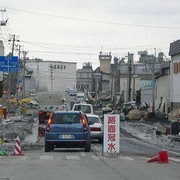 Governance and public sector management
Governance and public sector management
 Finance sector development
Finance sector development
 Social development and protection
Social development and protection
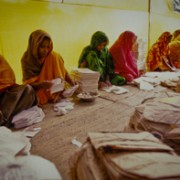 Regional cooperation and integration
Regional cooperation and integration
 Industry and trade
Industry and trade
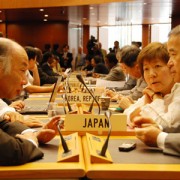 Finance sector development
Finance sector development
 Finance sector development
Finance sector development
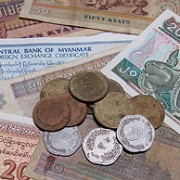 Population
Population
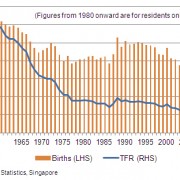
PRC and India: pursuing the same approach to free trade agreements?

Deep free trade agreements (FTAs) are key to trade-led growth in Asia. Deep FTAs can support a comprehensive regional agenda for liberalization covering reductions in barriers to goods and services trade as well as opening new areas beyond the current purview of WTO negotiations (like investment, trade facilitation, competition, government procurement and intellectual property). Deep agreements can also help lock in structural reforms at national-level and promote implementation of second generation reforms. Accordingly, deep FTAs are useful for opening markets and removing obstacles to the spread of production networks throughout Asia and the Pacific. The depth of FTAs among Asia’s developing giants—the People’s Republic of China (PRC) and India—is a topical issue.
Japan’s post-disaster growth strategy

The Great East Japan Earthquake on 11 March 2011 was the biggest earthquake recorded in Japanese seismic history, and the fourth largest recorded in the world. The scope of the triple disaster consisting of an earthquake, a tsunami, and a nuclear accident, far exceeded that of the Hanshin Earthquake of 1995. The repercussions of this disaster spread far beyond the geographical areas directly affected. For example, electric power supply capacity in the Kanto area, which accounts for about 40% of Japanese gross domestic product (GDP), fell at one stage by about 40% from the normal peak—a severe constraint on economic activity, and the supply of nuclear-generated electric power has largely been cut off since then. Production supply chains were significantly disrupted, not only in Japan, but all over Asia, although they recovered surprisingly rapidly.
G20 membership: horses-for-courses

The G20 leaders group achieved several significant examples of international economic cooperation in the first few meetings during the global financial crisis in 2008 and 2009. In the fraught crisis atmosphere, the G20 discussion encouraged bolder fiscal expansion, discouraged trade protectionism, spurred the world’s financial regulators into action to re-write the inadequate rules, and drew attention to the antiquated governance structure of the International Monetary Fund (IMF). With the immediate threat of global depression averted and the eurozone crisis not amenable to a global approach, many commentators observe that more recent meetings have lost a sense of urgency and purpose. This group has been successfully established as the paramount international economic coordination body (taking over that role from the G7 and G8) with a far more representative membership, but with the urgency of the immediate crisis gone, critical attention is focusing on the G20’s composition and agenda.
Avoiding a household-debt-driven crisis in Korea

The economy of the Republic of Korea (henceforth Korea) has been on a steady growth path despite the global financial and eurozone crises. Recently, Fitch and S&P, the global credit rating agencies, upgraded Korea’s sovereign credit rating by one notch. Fitch’s rating for Korea, AA-, is the fourth-highest rating on its rating scale and a notch higher than those of the PRC and Japan. Notwithstanding these positive signs, Korea’s economy faces many internal and external challenges. One of the most serious is excessive household debt. Korea’s household debt has increased drastically since 2000. For the past 12 years, household debt has increased by an average of 13.3% every year, far in excess of the average annual nominal GDP growth rate of 6.2% during the same period.
Toward a new capitalism

Grameen Bank (Village Bank) in Bangladesh is the world’s most well-known microfinance institution. It lends $1.5 billion a year to 8.4 million people. The establishment of Grameen Bank shows that we do not always have to accept the systems we are given. Sometimes we have to think the impossible if we are really going to change the world. My first venture into such small-scale lending was not carefully thought out or based on any previous research; rather, it was an instinctive response made when I came face-to-face with gross injustice. In 1976, I was teaching economics in the port city of Chittagong in Bangladesh.
Energy is the key to 21st century Eurasian geopolitics

The pattern of world energy trade has changed significantly in recent decades and this is having profound implications for global geopolitics. Several Asian economies, particularly the People’s Republic of China (PRC) and India, have emerged as the region’s most conspicuous energy consumers because of their phenomenal economic growth. On the supply side, the world’s largest energy producers are located in the geographically proximate regions of Central Asia, the Middle East, and Russia. A complementary relationship between these energy exporters and suppliers is evident and is being strengthened, connecting together Central and East Asia, parts of India, the Persian Gulf, and Russia. I call this the “new continentalism.”
The Doha Round: Missed opportunities and how Asian institutions can help

The Doha Round of the World Trade Organization (WTO) negotiations has been stalled since July 2008. To try to end this impasse, the leaders of the G-20 pledged at their summit in Seoul in November 2010 that negotiations should be concluded by the end of 2011. Since a consensus among the G-5—the European Union, Brazil, the People’s Republic of China (PRC), India, and the United States—would be required for this to happen, the negotiations fell mainly into the hands of these members. However, much to the disappointment of the rest of the World Trade Organization (WTO) membership, in April 2011 the G-5 announced that their differences were too wide and that they would stop looking for a breakthrough. As a result, the target of concluding the Doha Round by the end of the year was not met.
Lessons for the eurozone from Asia

In analysing the European financial crisis, Asia’s experience with the 1997 Asian financial crisis is a useful point of reference. After the forced devaluation of the Thai baht, encouraged by the People’s Republic of China (PRC) and Japan, Thailand was compelled to accept the IMF-imposed austerity programs. As part of the contagion that followed the baht crisis, Indonesia and the Republic of Korea also accepted the IMF program. As the IMF’s prescriptions reduced aggregate demand and contained no “pro-growth” elements, they worsened the crisis in these Asian countries. In contrast, Malaysia rejected the IMF’s prescriptions. The different experiences of these crisis-hit Asian economies led to a change in thinking on the productiveness of “straight” austerity programs as a response to the financial crises. Austerity policies were relaxed and pro-growth policies introduced, which in combination, helped Asia to recover from its financial crisis.
Myanmar has much to learn from Viet Nam’s exchange rate reforms

Myanmar’s exchange rate reform is a fundamental change, but it is not unique. A striking parallel can be found in Viet Nam’s move in the late 1980s to unify its multiple exchange rates into a single rate and its corresponding announcement of exchange rate management through a managed float, just as Myanmar is doing now. The experience of Viet Nam in reforming its exchange rate system—both good and bad—offers valuable lessons for Myanmar. The aim of this piece is to try to draw out some of these lessons. The objective is not to recommend that Myanmar should uncritically follow the lessons from the Viet Nam experience, but that the country should adopt these lessons to its own circumstances.
Singapore’s population conundrum

Singapore’s resident total fertility rate (TFR), or the average number of births a hypothetical woman can expect to have by the end of her childbearing years if she experiences the age-specific rates in a given year, has been well below the replacement level (generally considered to be 2.1) since 1976. Singapore has one of the lowest fertility rates in the world, together with Hong Kong, China; Japan; Republic of Korea; and Taipei,China (United Nations 2009). Our projections (Institute of Policy Studies May 2012) show that if the TFR remains constant at 1.24 births per woman from 2005, Singapore’s citizen and permanent resident population (known collectively as the “resident population”) will decline from 2020. Read more.


Search
Subscribe / Connect to Asia Pathways
Subjects
- Agriculture and natural resources
- Blog
- Capacity development
- Climate change
- Economics
- Education
- Energy
- Environment
- Finance sector development
- Gender
- Governance and public sector management
- Health
- Industry and trade
- Information and Communications Technology
- Infrastructure
- Miscellaneous
- Population
- Poverty
- Private sector development
- Regional cooperation and integration
- Sanitation
- Social development and protection
- Transport
- Uncategorized
- Urban development
- Video Blog
- Water
Recent Posts
- Artificial intelligence: A new driver for inclusive growth and development?
- Increasing trust in cross-border e-commerce and artificial intelligence
- Enhancing access to maternal and newborn healthcare in developing Asia
- Can electric vehicles lead the way to a sustainable future?
- Mitigating climate-related sovereign risk to accelerate action on the climate emergency




Recent Comments